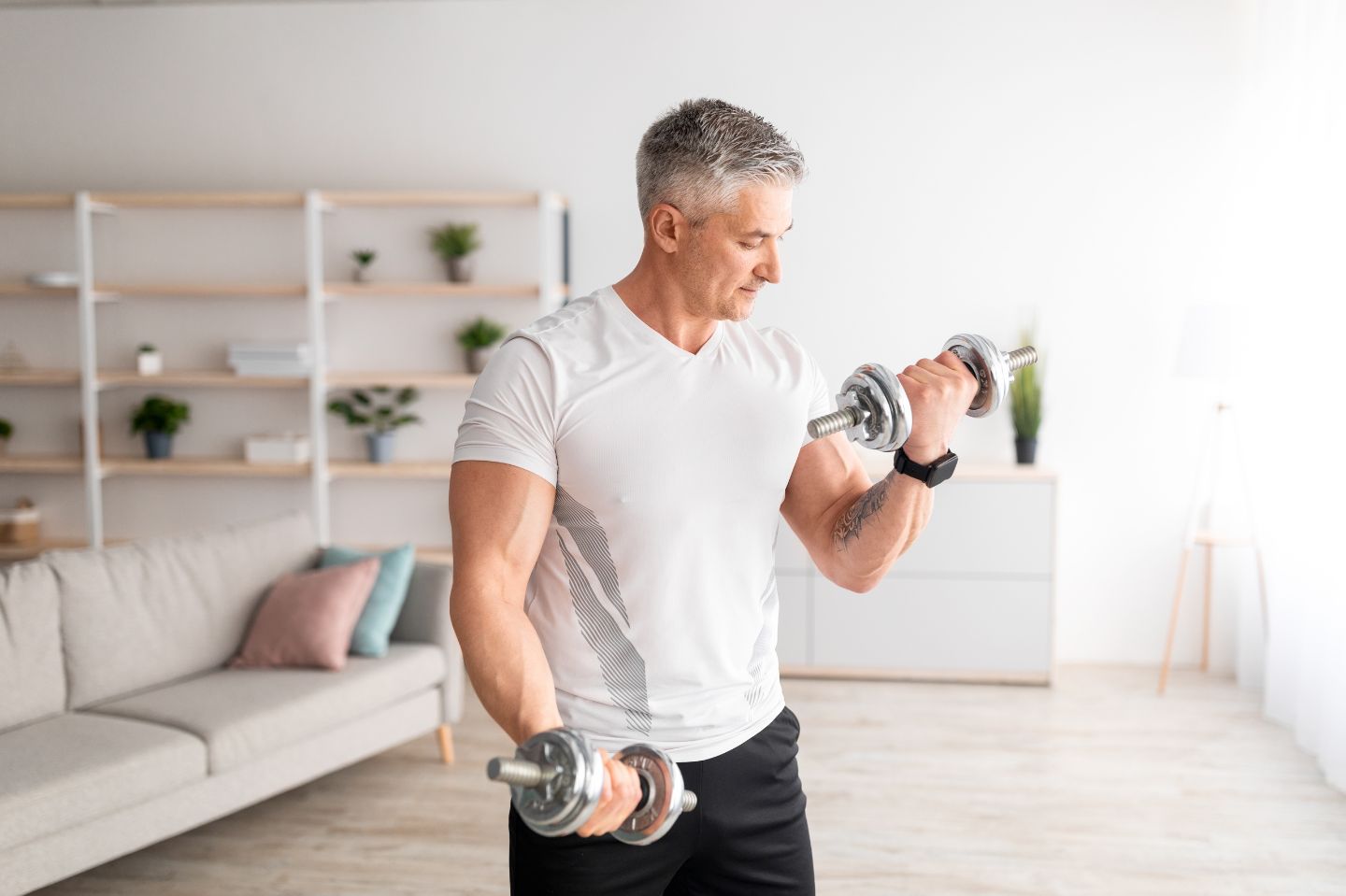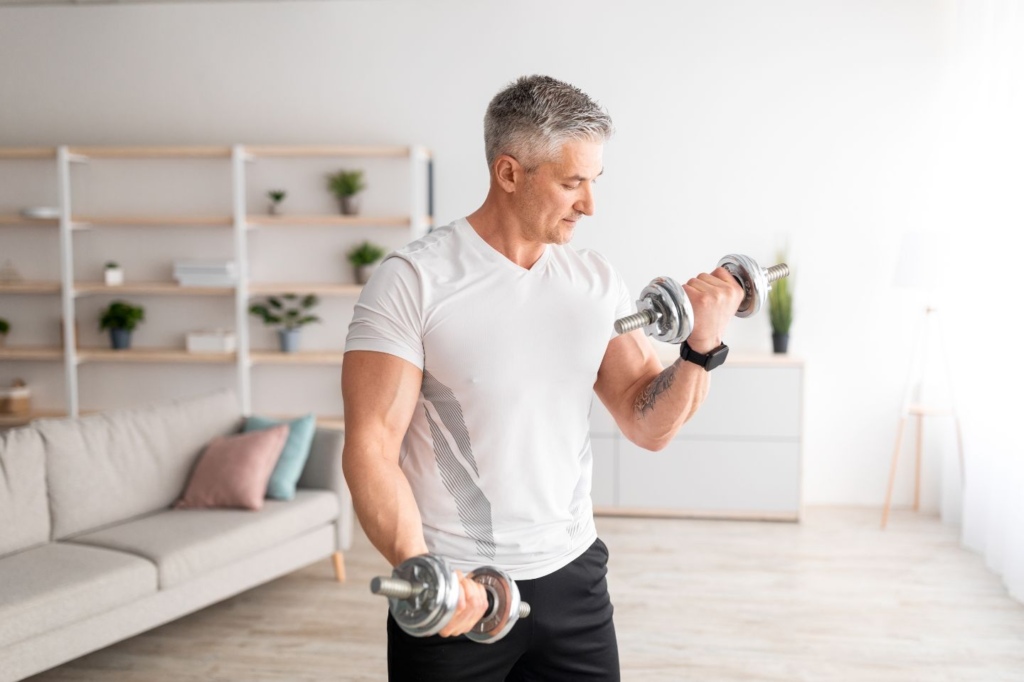
Aging doesn’t mean your fitness journey has to end. In fact, building muscle after 60 is essential for maintaining independence, improving balance, and enhancing overall quality of life.
By incorporating targeted strength training exercises into your routine, you can defy the aging process and experience a renewed sense of vitality.
Let’s explore how to build and maintain muscle mass at any age
The Importance of Strength Training After 60

Strength training is often overlooked by older adults, yet it’s crucial for maintaining independence and quality of life. Here’s why:
- Prevents falls: Strong muscles improve balance and stability, reducing the risk of falls.
- Boosts metabolism: Building muscle helps burn more calories even at rest.
- Enhances bone health: Strength training helps prevent osteoporosis.
- Improves mood: Regular exercise can boost mood and reduce symptoms of depression.
Exercise Modifications for Older Adults
It’s essential to listen to your body and adjust exercises as needed. Here are some tips:
- Start slowly: Begin with low weights or resistance and gradually increase the challenge.
- Focus on form: Proper form is crucial to prevent injuries. Consider working with a trainer to learn the correct techniques.
- Incorporate balance exercises: Exercises like tai chi or yoga can improve balance and stability.
- Listen to your body: Take rest days when needed and avoid overexertion
Key Exercises for Over 60
- Bodyweight exercises: These are excellent for building strength without equipment. Examples include squats, lunges, push-ups (against a wall if needed), and planks.
- Resistance band exercises: These versatile tools offer adjustable resistance and are suitable for various fitness levels. Exercises like bicep curls, rows, and shoulder presses can be performed using resistance bands.
- Weightlifting: Incorporate light weights into your routine to challenge your muscles and promote growth. Focus on compound exercises like squats, deadlifts, and bench presses.
- Chair exercises: For those with limited mobility, chair-based exercises can be beneficial. These include seated rows, leg lifts, and arm circles.
Remember: It’s essential to start slowly and gradually increasing your workouts’ intensity. Listen to your body and consult with a healthcare professional before starting any new exercise program.
Key Exercises for Seniors
- Squats: Target the legs, core, and glutes. Begin with bodyweight squats and gradually progress to holding weights.
- Lunges: Work the legs, core, and balance. Start with static lunges and progress to walking lunges.
- Push-ups: Modify by performing them against a wall or with knees on the ground to reduce difficulty.
- Rows: Strengthen the back and arms using resistance bands or dumbbells.
- Bicep curls and tricep extensions: Target the arms for increased upper body strength.
Remember: Proper form is crucial to prevent injuries. Start with light weights or resistance and gradually increase the challenge as you get stronger.
Let’s Break Down Those Exercises
Squats
Targets: Legs, core, glutes
How to:
- Stand with feet shoulder-width apart, toes slightly turned out.
- Lower your body as if sitting back into a chair, keeping your back straight and knees aligned with your toes.
- Lower until your thighs are parallel to the ground.
- Push through your heels to return to the starting position.
Modifications:
- For beginners, start by holding onto a chair for balance.
- For added challenges, hold weights or try holding a jump at the top of the movement.
Lunges
Targets: Legs, core, balance
How to:
- Stand with feet shoulder-width apart.
- Step forward with one leg, lowering your body until both knees are bent at a 90-degree angle.
- Push off your front foot to return to the starting position.
- Repeat with the other leg.
Modifications:
- For beginners, start with smaller steps and hold onto a chair for balance.
- For added challenges, hold weights or try lunge variations like reverse lunges or lateral lunges.
Push-ups
Targets: Chest, shoulders, triceps, core
How to:
- Start in a plank position with hands directly under the shoulders.
- Lower your body towards the ground, bending your elbows.
- Keep your body in a straight line, avoiding sagging in the hips or back.
- Push back up to the starting position.
Modifications:
- For beginners, start with knee push-ups or wall push-ups.
- For an added challenge, try wider or closer hand placements.
Rows
Targets: Back, arms, core
How to:
- Stand with feet shoulder-width apart, holding dumbbells with arms extended down.
- Hinge forward at the hips, keeping your back flat.
- Row the dumbbells towards your chest, squeezing your shoulder blades together.
- Lower the weights back to the starting position.
Modifications:
- Use resistance bands for lower resistance.
- Try different grip variations to target different muscles.
Bicep Curls and Tricep Extensions
Targets: Arms
How to:
- Bicep curls: Stand with feet shoulder-width apart, holding dumbbells with palms facing forward. Curl the weights towards your shoulders, keeping your elbows close to your body. Lower the weights back down.
- Tricep extensions: Stand with feet shoulder-width apart, holding a dumbbell behind your head with both hands. Extend your arms upward, then lower the weight back behind your head.
Modifications:
- Use lighter weights or resistance bands for beginners.
- Focus on controlled movements to maximize muscle engagement.
Remember: Proper form is crucial to prevent injuries and maximize the benefits of these exercises. Start with a weight that challenges you but allows you to maintain good form. Gradually increase the weight or resistance as you get stronger.
Would you like to learn about creating a workout routine incorporating these exercises?


